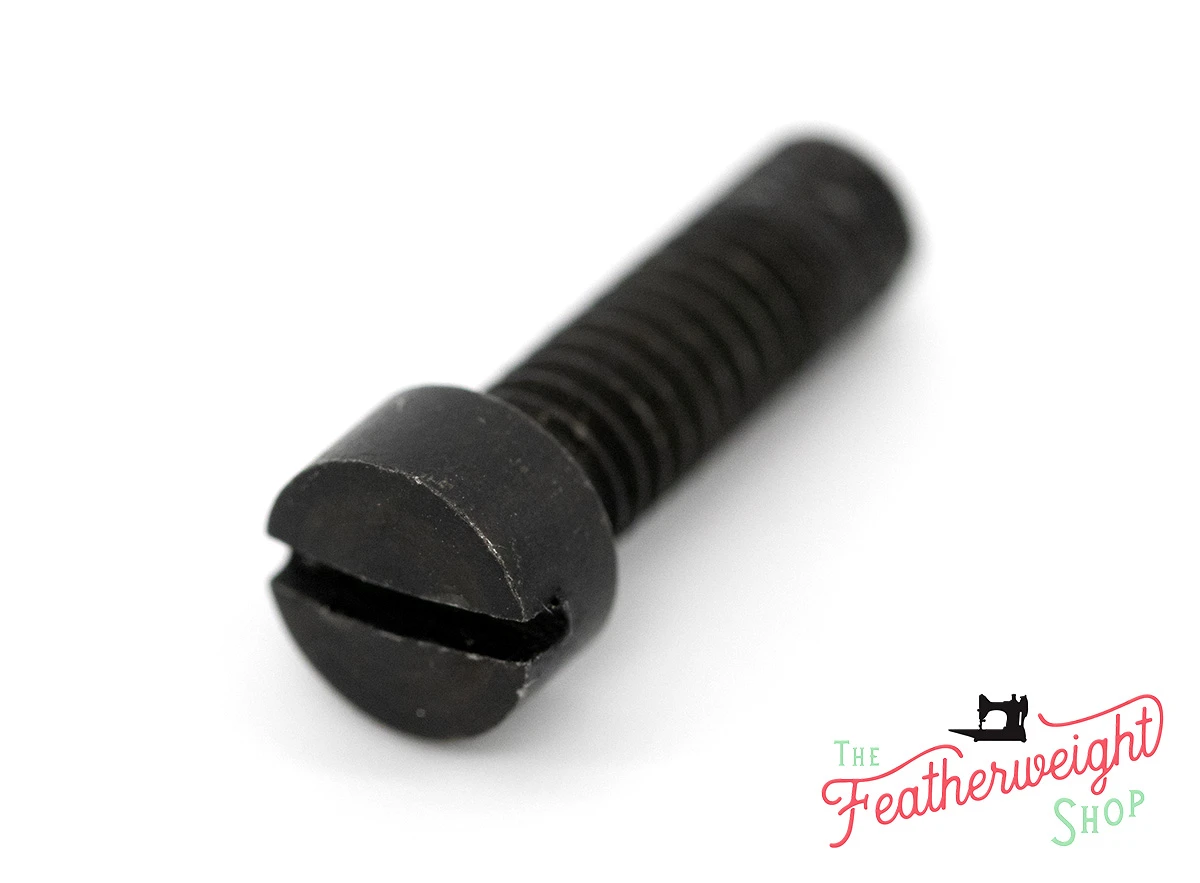I am (partially) disassembling an old sewing machine to clean it up.
While removing the bobbin winder, I found this thing that has a screwdriver slot, but it isn't a screw.
This is the part:
It came out of here:
It is actually held in place by a set screw. The hole for the set screw can be seen just to the left of where the axle goes into the sewing machine housing.
The axle is completely round - no flat side.
The set screw is screwed into the housing and only presses on the axle to hold it. There is no hole in the axle for the set screw.
- Why does this axle have a screwdriver slot?
- Is there a general name for this kind of thing?
Yes, it is "the bobbin winder axle." The machine has several axles installed this way, though. That makes me think that this is some kind of hundred year old standard method for installing axles.
I don't know why it is there or what its original intended purpose was, but without that screwdriver slot I'd have never gotten the bobbin winder off of the machine.
With the screwdriver slot, I could squirt WD40 in through the set screw hole then work the axle round and round to scrape decades of dried oil off of the axle until it was clean enough to pull out.
To clarify:
The left arrow is pointing at a speck of dirt. The right arrow is pointing at the screwdriver slot in the axle.
The speck of dirt caused some confusion. The axle is round and smooth. It has no flat side or hole for the set screw.





